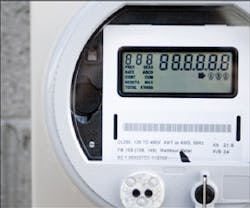Zero in on inefficient machines and wasteful practices with smart meters, then take action exactly when and where it's needed.
The devices relay usage information and other data to a central computer or web-based interface, where an FM can use it to develop an energy-efficiency action plan, identify problem appliances, or kick off an emissions-cutting contest between tenants.
"You can only manage what you measure," says Stephan Prueger, vice president of sales at meter vendor TrendPoint. "Today, people don't really have good visibility of what's happening in the facility. They don't know where it's going and specifically who's using it."
How Smart Are They?
Depending on the model, smart meters (also known as electric submeters, to distinguish them from outdoor smart meters issued by utilities), can gather data on voltage, wattage, kWh used, power factor (the real power used compared to the total apparent power supplied), and even estimate your greenhouse gas emissions. Use a set of them to track usage by the circuit, tenant, or floor. Is an office on the first floor using more than its share of power? Maybe a heating unit is failing and has to work overtime just to keep up.
When the meters are first installed, you can use the equipment to measure benchmarks, then keep an eye on the usage trends to spot changes or potential problems and assess the performance of your improvements.
Some products can even interface with utility-issued meters, aiding your energy conservation and cost analysis practices. Oncor, a Dallas-based transmission and distribution utility, plans to issue every customer a utility-grade outdoor smart meter by 2012. Optional add-ons from third parties can use the data from the utility's master meter to show your carbon footprint or price per kWh.
"Now that customers know what they're using and when, they can analyze their usage," says Catherine Cuellar, Oncor's senior communications specialist. "They can make a determination about lighting or computer usage after hours, or other inefficiencies that are costing a lot of money, and quickly analyze and address those – not just at the end of the month when the bill comes, but from day to day and hour to hour. If they make improvements to weatherization or insulation, they can see one day to the next what those windows or doors are saving them."
The meters are rapidly gaining acceptance among BOMA Chicago members, according to Metropolitan Energy CEO Michael Munson. The association's approximately 267 member buildings represent a wide variety of metering technology and techniques, from sophisticated systems to standard displays offering basic services. Feedback on the meters is generally positive, especially from FMs who manage proactively instead of waiting for issues to pop up, he says.
"People always talk about relamping or relighting as a quick, easy energy saver, but how do they know if they don't look at the data and analyze the information?" he says. "The ones who do are the ones who use their information for lowering their energy costs and being involved in the markets, and that's positive."
Consider This
Before shopping for smart meters, assess the scope of your project and narrow the field to only the systems that meet your building's specific needs. Whatever product you ultimately choose should meet a few bare-bones specifications:
- How up-to-date is the information? Your meter should report as close to real time as possible, Munson and Prueger agree. "The capability is in real time – unless you like dial-up on your computer," Munson adds.
- How accurate are the measurements? Some products boast utility-grade accuracy for amperage or voltage, but overall accuracy can vary, Prueger says. Take a close look at the spec sheets – you can get accuracy statistics for amps, voltage, and power factor and determine the value for the overall product yourself. Some manufacturers use ANSI C12.1 standards as a sort of shorthand for a product's accuracy.
- How will I know how I'm doing? Any meter worth its salt should be able to keep track of your energy-usage trends, Prueger says. "Looking at it over a week or a month, you have a good average of the efficiency."
"It's fundamental, the access to information," Munson says. "The question is, what is a good solution that satisfies a utility and the customer? That's a work in progress right now."
Janelle Penny ([email protected]) is associate editor of BUILDINGS.
About the Author
Janelle Penny
Editor-in-Chief at BUILDINGS
Janelle Penny has been with BUILDINGS since 2010. She is a two-time FOLIO: Eddie award winner who aims to deliver practical, actionable content for building owners and facilities professionals.

